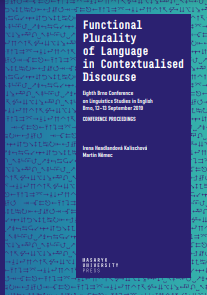ENGLISH AND CZECH CHILDREN’S LITERATURE: A CONTRASTIVE CORPUS-DRIVEN PHRASEOLOGICAL APPROACH
ENGLISH AND CZECH CHILDREN’S LITERATURE: A CONTRASTIVE CORPUS-DRIVEN PHRASEOLOGICAL APPROACH
Author(s): Markéta Malá
Subject(s): Studies of Literature, Czech Literature, Other Language Literature, Phraseology
Published by: Masarykova univerzita nakladatelství
Keywords: children’s fiction; n-grams; time; space; body language; phraseology;
Summary/Abstract: The paper explores the recurrent linguistic patterns in English and Czech children’s narrative fiction and their textual functions. It combines contrastive phraseological research with corpus-driven methods, taking frequency lists and n-grams as its starting points. The analysis focuses on the domains of time, space and body language. The results reveal register-specific recurrent linguistic patterns which play a role in the constitution of the fictional world of children’s literature, specifying its temporal and spatial characteristics, and relating to the communication among the protagonists. The method used also points out typological differences between the patterns employed in the two languages, and the limitations of the n-gram based approach.
- Page Range: 109-125
- Page Count: 17
- Publication Year: 2020
- Language: English
- Content File-PDF

